Introduction
The HF M31 is part of a series from Canon that includes the HF M30 (8GB internal memory) and HF M300 (SD/SDHC memory card only).
Product Tour
The HF M31 has the same lens as last year's HF20 and HF200 from Canon. The lens has a fairly wide angle for a mid-range camcorder (51.5°) and it has a built-in lens cover that automatically opens and closes. The sensor on the HF M31 is average for a camcorder of its class, coming in at 1/4-inch. This is roughly the same size sensor as you'll find on the Panasonic HDC-HS60 and JVC GZ-HD620.
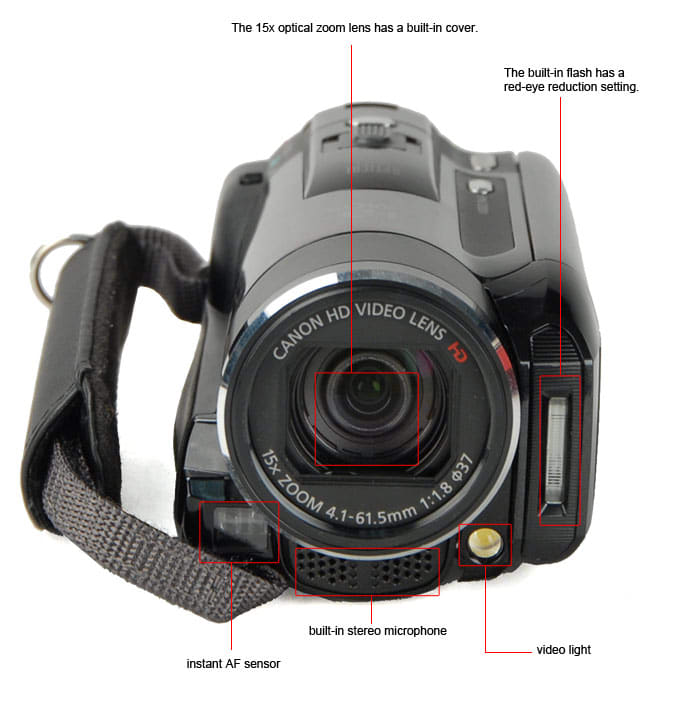
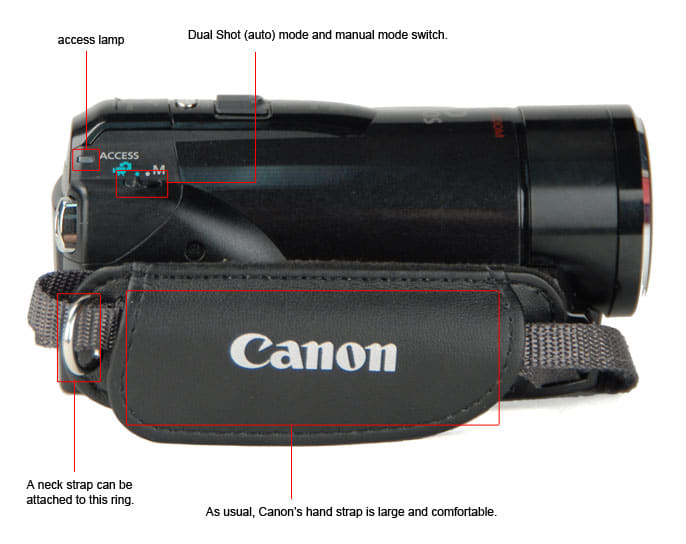
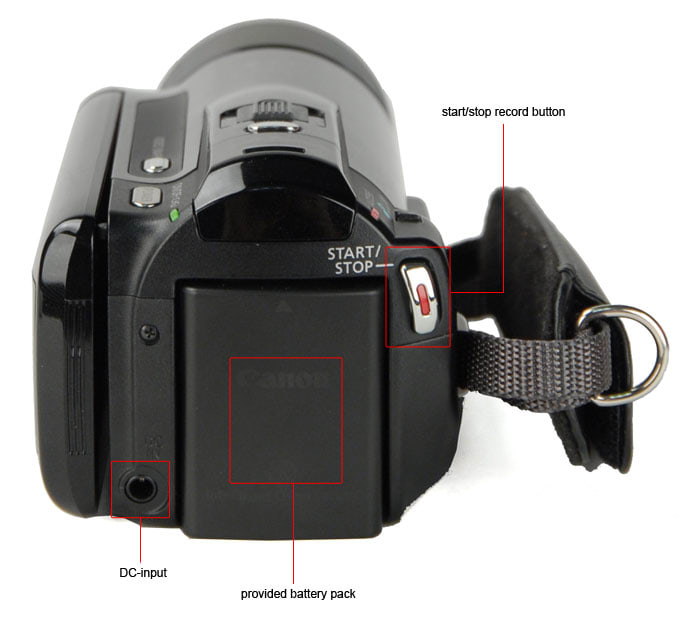
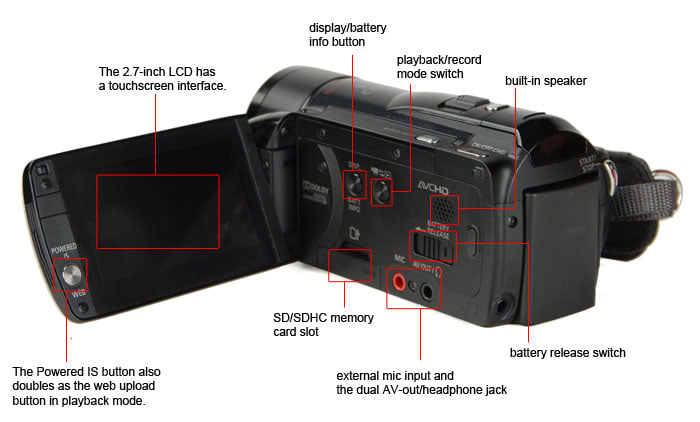
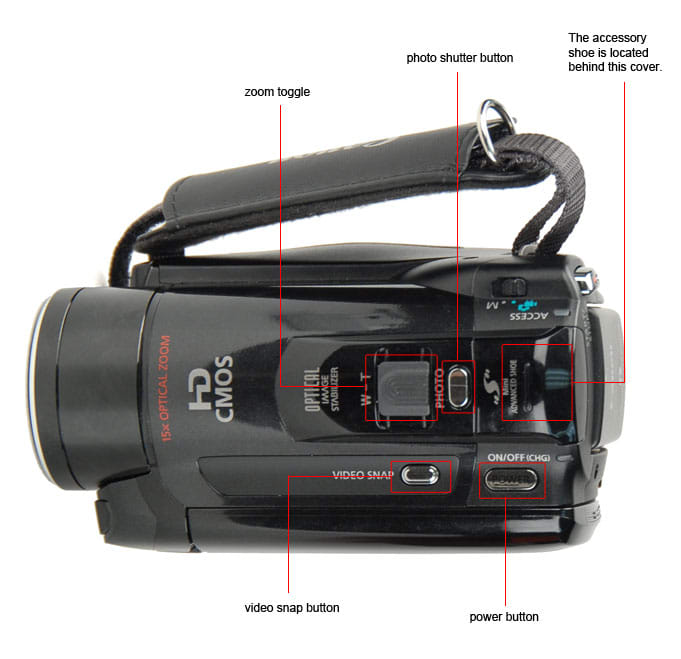
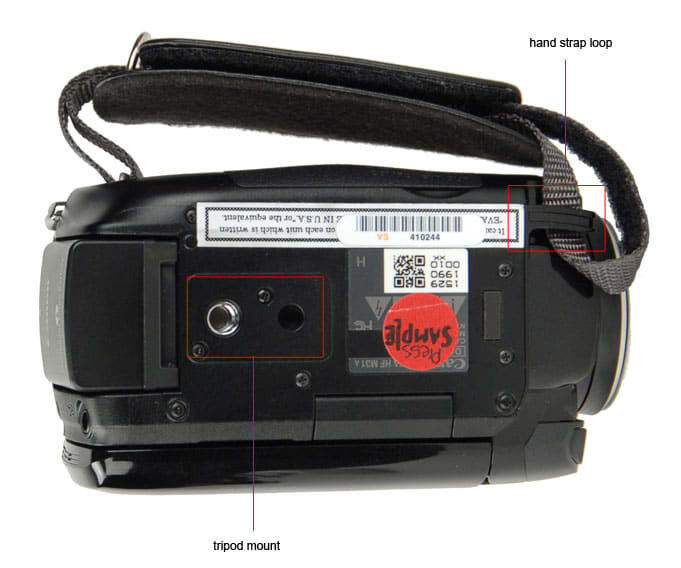
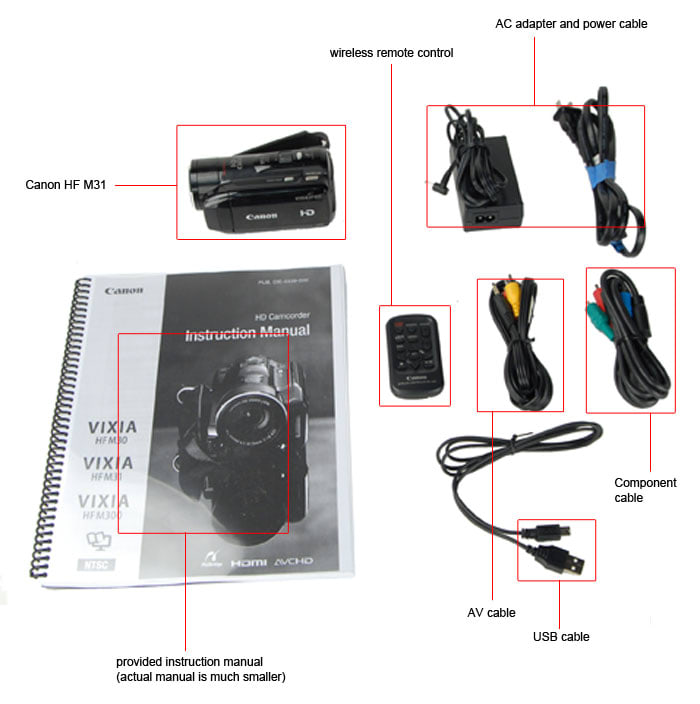
Color & Noise Performance
The Canon HF M31 didn't do as well in our color accuracy test as we'd hoped, but the camcorder did manage similar results to what we saw from the Canon HF S21. The M31 measured a color error of 4.97 with a saturation level of 88.33%. (More on how we test color.)
It seems as if Canon tweaked the color rendering on its new camcorders this year, but we actually prefer the look created by last year's models (like the HF20). The difference isn't extreme, however, and the HF M31 does come with a variety of color adjustment tools and presets—so you can fine tune the color to your own liking. The only problem is these color controls don't give you much room for adjustment, so the changes you make don't result in drastic color alteration.
As you can see from the sample images below, the Canon HF M31's bright light video doesn't look much different than the Canon HF S21. The Panasonic HDC-HS60 and JVC GZ-HD620 both registered more accurate colors, but all the models had saturation levels between 80% and 90%.
When analyzing our color accuracy results, remember that determining color quality really comes down to personal preference. Some may prefer the colors produced by the Canon camcorders over the Panasonic or JVC models, while others may have opposite preferences. All we can say is the JVC GZ-HD620 rendered the most accurate colors in this test (while also measuring the highest saturation level). All JVC camcorders tend to do very well on this test.
The Canon HF M31 did not give a strong performance in our bright light noise test. The camcorder averaged 0.947% noise, which is worse than the rest of the camcorders we compared it to (it's also more noise than most mid-range HD camcorders register in bright light). This noise percentage is roughly equivalent to what we measured last year on the Canon HF20. (More on how we test noise.)
Despite its noise, the HF M31 does capture an impeccably sharp image in bright light, which you can see by looking at the crops above. It's image and detail is a bit sharper than both what the Panasonic HDC-HS60 and JVC GZ-HD620 were capable of, and you could even argue that it rivals the Canon HF S21 when it comes to sharpness.
Motion & Sharpness Performance
The HF M31 captures a very sharp image for a mid-range HD camcorder, so it shouldn't be a surprise that the model showed minimal artifacting in our motion test. Overall, it was tough to really see a difference between the HF M31 and its big sister, the HF S21, when it came to motion—except for the fact that the HF S21 has its native 24p frame rate option. The HF M31 captured smooth video, had some noticeable trailing and some minor color bleeding, but rendered motion very well in the end. (More on how we test motion.)
The HF M31 has no slow motion options, but it does have its two alternate frame rates: PF30 and PF24. These frame rates aren't native, which means the camcorder converts them to 60i during recording (the 24p mode on the HF S21, on the other hand, is native). Still, the PF30 and PF24 modes produce an entirely different look for your recorded video. The modes offer slower, choppier video that are meant to evoke a film-like aesthetic. Whether you prefer the look created by these frame rates is very much a personal preference.
The HF M31 measured a horizontal sharpness of 900 lw/ph in our video testing, which is a very strong score. The camcorder managed a more disappointing 600 lw/ph in vertical sharpness, which is a surprise considering last year's HF20 measured at 900 lw/ph vertically (but only 800 lw/ph horizontally). We're not quite sure why this discrepancy occurred, but we assume Canon must have tweaked the processing slightly on its new camcorder. A vertical sharpness of 600 lw/ph isn't bad, though, as most consumer HD camcorders top out with a vertical sharpness around 600 lw/ph. Overall, the HF M31 captured one of the sharpest images we've seen from a mid-range HD camcorder, although the Panasonic HDC-HS60 wasn't far behind. (More on how we test video sharpness.)
Low Light Performance
**Low Light Sensitivity***(1.16)*
The Canon HF M31 required 22 lux of light to register 50 IRE on our waveform monitor—the same amount of light the Canon HF20 required in this test last year. We're disappointed Canon didn't improve the low light sensitivity on its new batch of mid-range camcorders, as that was the biggest issue we had with the HF20 and HF200 last year. (More on how we test low light sensitivity.)
The other camcorders in this set did quite a bit better than the HF M31 when it came to sensitivity. The JVC GZ_HD620 was the most impressive, especially considering JVC doesn't have the strongest track record when it comes to the low light capability of its camcorders. In the HF M31's defense, however, it is one of the few mid-range camcorders to offer multiple frame rates for recording HD video. Using its PF30 or PF24 modes in low light situations will drastically improve low light sensitivity (see table below). The Canon HF S21, as well as a few other high-end models from other manufacturers, also has multiple frame rate options.
As we've noticed with most of our testing, the Canon HF M31 had nearly identical results in our low light color test to last year's Canon HF20. The camcorder measured a color error of 6.00 with a saturation level of 68.89%. Neither of these numbers are particularly impressive, but they are average for a camcorder of its class. (More on how we test low light color.)
Surprisingly, the Canon HF M31 didn't show much of an improvement with color accuracy when we recorded using its alternate frame rates. Yes, the saturation level went up quite a bit, but the color error only went down slightly (to 5.74 from 6.00).
The Canon HF M31 produced a fairly dark image in our low light testing, although it wasn't that much darker than what the Panasonic HDC-HS60 and JVC GZ-HD620 managed. Just as we saw in our bright light color test, the JVC GZ-HD620 was the leader of the pack when it came to low light color accuracy. It's image not only had accurate colors, but it also had a very impressive 88% saturation level.
Noise was a big problem on the Canon HF20 last year, but Canon seemed to improve things a bit with the HF M31. The camcorder averaged 1.405% noise in our low light test, which is fairly good for a mid-range HD camcorder. It isn't the lowest amount of noise we've ever seen—the JVC GZ-HD620 continued its dominating low light performance with an excellent score in this test—but it is still worthy of praise. (More on how we test low light noise.)
You can see fine specks of noise on all of the images shown above, but we must point out that the JVC GZ-HD620 has the most blurred image of the bunch. This lack of sharpness is probably why the HD620 measured such low noise levels in this test. So, it is up to you what kind of image you prefer—less detail with less noise, or a sharper image with more noise.
Compression & Media
The Canon HF M31 uses AVCHD compression, which is based on the MPEG-4 AVC/H.264 codec. AVCHD is the standard compression system for consumer HD camcorders and it is currently used by nearly all manufacturers (except Samsung and Sanyo). Read more about the advantages and disadvantages of AVCHD.
The camcorder has a number of quality settings for recording HD video, but it does not have a standard definition record mode. Any of the camcorder's three frame rates (60i, PF24, and PF30) can be used for recording with each quality setting. We must note that the PF24 and PF30 frame rates are not recorded natively. Recordings made using those frame rates are converted by the camcorder and recorded onto memory as 60i.
The Canon HF M31 contains 32GB of internal flash memory along with a card slot that fits SD/SDHC memory cards. 32GB is good amount of memory for a mid-range HD camcorder to have, although there are a number of high-end models loaded with 64GB of flash memory or more. Read more about the advantages and disadvantages of flash memory here.
Recording at the M31's highest quality setting should allow you to capture close to three hours of video onto the camcorder's 32GB of internal flash memory. This really isn't that much in the whole scheme of things, so make sure you have a good plan for backing up your footage to some sort of storage device.
The Canon HF M31 ships with Pixela ImageMixer 3SE Video Editing software—the same software that comes with the HF S21 and a number of Canon camcorders from last year. For an overview of the software that ships with the Canon HF M31 and other Canon camcorders, see our article: 'Video Editing Software For Your Camcorder'
Manual Controls
The Canon HF M31 has a dedicated auto mode called Dual Shot mode. This mode is activated by pushing the switch on the camcorder's right side towards the two green icons of a camera and a camcorder. In this mode stabilization is activated and all of the camcorder's controls are set to automatic. You also can't get into the menu system when you're in Dual Shot mode, and tapping the LCD will activate the AF/AE tracking system on the camcorder.
Like all Canon camcorders, the HF M31 has two autofocus options: Normal and Instant AF. Normal AF is a gradual focus adjustment, and it is focuses with a similar speed to what we usually see on consumer camcorders. The Instant AF setting produces a more snap-like focus, which may be preferable to some users. Personally, we like the gradual transitions of Normal autofocus, but that's just our preference.
Exposure adjustments were occasionally jarring on the HF M31, particularly when we went from very bright to darker scenes. This wasn't a huge problem with the camcorder, however, as most of the time exposure was adjusted in a smooth, gradual manner. We were impressed with the HF M31's auto white balance system, as it appeared to function very well under all different kinds of lighting.
The AF/AE tracking feature on the HF M31 is exciting, of course, and it works just as well as it does on the HF S21. This is a new feature for Canon now that the company has implemented touchscreens on its mid-range and high-end HD camcorders. Panasonic has a similar tracking feature on its HD camcorders as well. We also like the touch focus and touch exposure options available with the touchscreen interface.
We should say that the Smart Auto feature, which automatically picks a scene mode for the camcorder to shoot in based on lighting conditions, wasn't all that impressive. The camcorder occasionally shifted scene modes too often and created some unwanted changes to the light levels and quality of recording. We think its best to pick your own scene mode to record in if you can.
The default setting for the HF M31 is variable zoom speed control. This allows you to control how quickly the camcorder will zoom by simply applying more or less pressure on the top-mounted zoom toggle. You can also set the zoom toggle to one of three constant zoom speeds by going into the camcorder's menu.
A secondary zoom control option is present on the camcorder's touchscreen (you must activate these touch-buttons by selecting zoom from the Function Menu). These buttons—unlike most secondary zoom controls—also allow for variable zoom speed control. If you touch the wider portion of the buttons you will zoom faster, while touching the thinner parts of the buttons will get you a slower zoom. You can also set these buttons to work at a constant zoom speed.
The HF M31 has a 15x optical zoom lens, which is the same amount of zoom that Canon offered on its HF20 last year. You can increase the zoom up to 60x or 300x using digital magnification, but we don't recommend doing so. Using digital zoom can severely degrade the image quality of your video.
Surprisingly, the HF M31 doesn't have an intelligent or advanced zoom feature that are popular options on camcorders from other manufacturers. These zoom options allow you to increase magnification without much loss in image quality (by taking advantage of unused pixels on the sensor to magnify the image).
The HF M31 doesn't have a lens ring or focus dial, so you must use the touchscreen interface to set focus manually. You can do this by pressing two focus buttons (one for focusing more distant objects and the other for bringing the focus closer), or you can use the spot focus feature. Spot focus allows you to tap part of the LCD and the camcorder will bring that portion of the screen into focus. With the regular manual focus system you can turn a magnification focus assist feature on that digitally magnifies the image while you are setting the focus (this magnification won't be part of your recorded video).
You can adjust exposure on the HF M31 manually using two different methods. First, there's the classic EV value adjustment that allows you to set the exposure levels from -3 to +3 (in 0.25 EV increments). You can also perform a 'spot exposure' by tapping the portion of the screen that you wish to expose correctly. Both of these systems utilize the touchscreen interface, with the regular manual exposure requiring you to slide your finger along a scale to set a specific exposure value.
You can set the aperture on the HF M31 in aperture-priority mode (abbreviated as Av). With this mode activated, you may slide your finger along the bottom of the LCD to pick a specific f-stop—with the camcorder selecting a corresponding shutter speed automatically (so, it's not a full manual mode). The touch-sensitive dragging system is okay, but we found it difficult to select a specific aperture setting this way. You are stuck with using this setup, however, as the HF M31 does not have a lens ring or control dial for making manual adjustments.
Shutter speed can be set manually in the same way that aperture can: by using shutter priority mode (abbreviated as Tv). The camcorder has a good amount of shutter speed options, including three slow shutter speeds that are under 1/60 of a second. The interface for adjusting shutter speed is the same as aperture. You simply slide your finger along a scale at the bottom of the LCD. Note that the shutter speed options are slightly different when recording in PF24 mode instead of 60i or PF30.
The HF M31 has six white balance presets along with a manual white balance setting and an automatic option. Manual white balance is easy to set on the camcorder, but you do need to point the device at a white or neutral object first (like a blank sheet of paper). After you do that, you just press the 'Set WB' button on the LCD and let the camcorder do the rest.
While the HF M31 doesn't have full manual gain control, it does have an AGC Limiter option that allows you to set the maximum amount of gain the camcorder may use. This feature was previously found only on Canon's high-end HD models like the HF S21. You can set the AGC limit from 0dB to 24dB in 1dB steps, which is a generous range. The system for setting the gain limit is the same as aperture and shutter speed—you slide your finger along a touch-sensitive scale on the LCD.
**Color & Image Controls***(9.0)*
**Other Manual Controls***(1.0)*
Most of the HF M31's other manual controls come in the form of audio features, which we discuss in a later section of this review (click here to jump to this part of the review). There is an onscreen marker option, however, which we talk about below.
Still Features
The HF M31 does not interpolated the resolution on any of its still photos. This means the camcorder's maximum photo size option—2100 x 1575—is actually the maximum native resolution offered on the camcorder (around 3.3 megapixels). This is actually a good native resolution for a mid-range HD camcorder, particularly when compared to the dismal photo size options found on the Panasonic HDC-HS60 and JVC GZ-HD620.
The HF M31 has a dedicated photo mode (which is activated by pressing a button on the touchscreen), but you can also take photos in video mode or while you are recording (that's why it's called Dual Shot mode). There's a flash on the front of the camcorder that has red-eye reduction settings, and the camcorder has multiple continuous shooting modes (including bracketing). The shutter button is located on the top of the camcorder, right behind the zoom toggle. Manual controls in photo mode are essentially the same as what you get in video mode, except here you can also adjust the exposure metering setting to evaluative, center-weighted average, or spot.
The HF M31 earned a color error of 3.69 and a saturation level of 104.9% in our still image testing. Both of these are good scores for the camcorder and they are nearly identical to the numbers we got from the Canon HF S21 in this same test. (More on how we test still color.)
You can see the from the error map above that the HF M31 had some trouble with blue tones, while the rest of the colors on our test chart were produced with good accuracy. You can see a sample image from our color test below. The Canon HF M31 produced a brighter image than its competitors, but all of the camcorders did relatively well in this test.
The Canon HF M31 averaged 0.92% noise in our still image testing, which is the exact same amount of noise we measured on the Panasonic HDC-HS60. This is a bit more noise than we'd hope to see from the camcorder's still photos, but it isn't a terrible score—and it is almost the same amount of noise the camcorder registered in our bright light video testing. (More on how we test still noise.)
For a camcorder with a still image effective pixel count of roughly 3.31 megapixels, the Canon HF M31 did a fairly good job in our sharpness test. The camcorder measured a horizontal sharpness of 1562 lw/ph with 7.7% undersharpening, and a vertical sharpness of 1101 lw/ph with 2.7% undersharpening. Like we said, these scores are good for a 3.31 megapixel still image, but they are nothing compared to what the 8-megapixel Canon HF S21 was capable of. (More on how we test still sharpness.)
Handling & Use
Playback & Connectivity
The playback mode on the HF M31 looks identical to what you get on the HF S21. The only difference is the screen is a whole lot smaller, so selecting and navigating through your clips is a bit more tedious. Thankfully, the camcorder offers numerous clip arrangement views that makes it easier to find the particular video you are looking for. Clips can be arranged by date or scenes with specific faces (using face detection), or you can go into 3D Flip View which stacks clips from the same date on top of each other (somewhat like iTunes' Cover Flow display—if you're familiar with that).
Aside from its regular playback setup, the HF M31 also has 1080/60p output via its HDMI terminal and it includes an HD-SD downconversion option. The downconversion feature requires an SD/SDHC memory card to be inserted in the camcorder, as it essentially copies an existing clip from one media to another during the conversion (i.e. from the internal memory to a memory card). There is also a web upload conversion feature that works the same way (except it compresses video to a smaller, more easily uploadable format).
For a fairly compact mid-range camcorder the Canon HF M31 has a good amount of connectivity options. On the right side of the camcorder you'll find a long rubberized flap that pulls open to reveal a Component output, USB port, and HDMI terminal. We really don't like the placement of these ports, however, as they are right behind the camcorder's hand strap. The strap often gets in the way when you're trying to connect cables to these ports.
Two other ports and a memory card slot are located inside the LCD cavity. The external mic jack and AV-out port are not protected by port covers, but the LCD panel does provide cover to these ports when it is closed. Next to these ports is a hard-plastic door that flips down to open the SD memory card slot.
On the back of the camcorder, to the left of the battery is the DC-input. This input is unprotected, which is a shame, but we like its placement (it's always good if the DC-input is easy to access). The final connectivity feature on the camcorder is its top-mounted accessory shoe located just above the battery compartment. The shoe is powered (hot), but it only fits certain Canon accessories (they must fit the S Mini Advanced Shoe size). This is the same accessory shoe you'll find on all of Canon's high-end and mid-range camcorders from 2009 and 2010.
Audio & Other Features
The HF M31 is one of the better mid-range camcorders when it comes to audio features. Like all Canon camcorders, the HF M31 has an external mic input and its AV-out port can double as a headphone jack. It also has a hot accessory shoe that works with Canon-proprietary accessories (any Canon accessory that has a mini-shoe fit, that is). The built-in mic on the HF M31 is positioned well on the front of the camcorder and we never found our fingers accidentally rubbing up against it. The Canon HF M31 also has options for manual audio level control, audio level display, wind cut, and a microphone attenuator (for the built-in mic).
Video Light
You turn on the video light by using the option in the Function Menu. The light isn't very big on the HF M31, so don't expect it to illuminate with much intensity. It should still help you out when you're filming in total darkness, however, but make sure you aren't more than a few feet away from the subject you're trying to illuminate.
Pre Record
Pre Record has become a popular feature on consumer camcorders, as it allows you to record three seconds of footage before you even press the record button. The camcorder continually stores three seconds of footage in the camcorder's buffer memory, so when you do start recording you've already captured the last three seconds. This can be a good feature for recording action-oriented events, but the setting does eat up battery life.
Video Snapshot
Canon introduced Video Snapshot on last year's HD models, but the HF M31 has a few more options for the feature. Basically, when you press the Video Snap button the camcorder allows you to record videos of a specific length. On last year's HF20 you were limited to 4-second clips, but on the HF M31 you can set the Video Snapshot length to 2, 4, or 8 seconds. Overall, we think this feature is mostly a gimmick, but it can help amateur videographers to make sure they don't overdo things with long, boring shots. Video Snap forces you to record quick segments, which will most likely result in a more entertaining final product.
Digital Effects
Nothing incredibly exciting here... the Canon HF M31 has a fader, a wipe, a black and white setting, and a sepia mode. Remember, if you're planning on editing your video you can always add these effects in post-production instead.
Panasonic HDC-HS60 Comparison
The Panasonic HDC-HS60 is cheaper than the HF M31 and we think it has the slight edge when it comes to video performance. The two camcorders produced similar images in our bright light testing, although the HDC-HS60 had better color accuracy, less noise, and includes a much larger lens than the HF M31. When it comes to sharpness and motion, however, the HF M31 is the stronger camcorder as it includes two alternate frame rates (PF24 and PF30) while the Panasonic HDC-HS60 only records at 1080/60i. In low light, we give a slight edge to the Panasonic, although the differences between the two camcorders wasn't all that huge.
Performance aside, these two camcorders actually have a similar amount of features. The Panasonic does allow for complete manual aperture and shutter control, but Canon's shutter-priority and aperture-priority modes are probably good enough for most users. Both camcorders have limited manual gain controls and manual audio modes, but only the HF M31 includes an external microphone jack. Each of these models utilizes a touchscreen interface, but we like the response and feel on the Canon better than the Panasonic—although which you like better has a lot to do with personal preference.
If you don't mind recording to an internal hard drive instead of flash memory, the HDC-HS60 is the better deal here. It's $100 cheaper than the HF M31 and it performed just as well—if not better—in most of our testing (including image stabilization, which is an important feature for many videographers). The Canon HF M31 certainly looks slicker, has a better menu design, and it offers better connectivity features (the aforementioned mic jack as well as a hot accessory shoe). Still, for most consumers looking to purchase a mid-range model, the Panasonic HDC-HS60 is probably the better choice—mainly because it is available at a lower cost.
JVC GZ-HD620 Comparison
JVC seriously impressed us with the improved low light capability on the GZ-HD620. We expected the camcorder's strong color accuracy scores in both bright and low light, but it is the excellent noise and sensitivity numbers put up by the GZ-HD620 that left a lasting impression. Of course, the camcorder didn't manage to capture as sharp or detailed an image that we saw from the Canon HF M31, but the GZ-HD620's solid performance in other testing categories make it an intriguing camcorder.
With a $649 price tag the GZ-HD620 is quite cheap, but the camcorder feels rather cheap as well. Its flimsy hand strap, poorly-designed port covers, and scratch-prone body are just a few issues we had with the HD620's construction. That being said, this is probably what you should expect from one of the cheapest mid-range HD camcorders on the market. As far as features go, the GZ-HD620 isn't the most versatile product. The camcorder has a shutter-priority mode, a time-lapse record feature, and a few other manual controls that are mostly forgettable. The camcorder has no alternate frame rates, mediocre still features, and it uses a digital image stabilization system (rather than optical, which is usually the preferable system). We also cringe at the fact that you must use MicroSD memory cards with the GZ-HD620 when you don't want to record to its 120GB internal hard drive. MicroSD cards are nowhere near as easy to find as regular SD/SDHC memory cards, which are used by nearly every other consumer camcorder—even the new Sony models!
Is the JVC GZ-HD620 a better camcorder than the HF M31? Probably not, particularly when you take into account the very good motion and sharpness scores we measured from the Canon HF M31. Still, the GZ-HD620 is not a camcorder that should be fully dismissed. It is a solid all-around performer that is available for a very reasonable price.
Canon HF S21 Comparison
The HF M31 and the HF S21 certainly aren't in the same league—the HF S21 is Canon's flagship model for 2010 and it costs around $600 more than the HF M31. So, what is it about the HF S21 that justifies this much higher price tag? For starters, it's CMOS sensor is much larger, which translates into stronger low light performance and a somewhat sharper image. Still, we were soundly impressed by the HF M31's bright light testing, and it's results really weren't much different than the HF S21. In low light, however, the HF S21 has a clear advantage.
There's also the matter of features and handling advantages. The HF S21 has a larger LCD (3.5-inches), a fantastic control dial for making manual adjustments, and a small electronic viewfinder. The two camcorders have a similar amount of manual controls, but the HF S21 adds an extra frame rate (its native 24p mode) and an additional SD/SDHC memory card slot (for a total of two). The HF S21 also has double the internal memory of the HF M31, and it has a much larger lens—which effectively makes it a much larger camcorder as well.
The HF S21 is the better camcorder here, and we don't think anyone would argue otherwise. But we're not quite sure its improved performance and enhanced features are really worth the extra cash. Canon does have some cheaper flagship models—the HF S20 ($1099) and HF S200 ($999)—that are much better values than the HF S21 (the main difference with these cams is less internal memory and they don't have viewfinders). Still, if all you're concerned about performance we think the HF M31 is a fine option. Its the added features, adjustment dial, and larger LCD that make the HF S21 the more impressive product. And those are things that many consumers may not care about.
Conclusion
Photo Gallery
Specs and Ratings
{{manufacturer_specs_table}}{{raw_scores_table}}
Meet the tester
Jeremy is the video expert of our imaging team and Reviewed.com's head of video production. Originally from Pennsylvania and upstate NY, he graduated from Bard college with a degree in film and electronic media. He has been living and working in New England since 2005.
Checking our work.
Our team is here for one purpose: to help you buy the best stuff and love what you own. Our writers, editors, and lab technicians obsess over the products we cover to make sure you're confident and satisfied. Have a different opinion about something we recommend? Email us and we'll compare notes.
Shoot us an email
